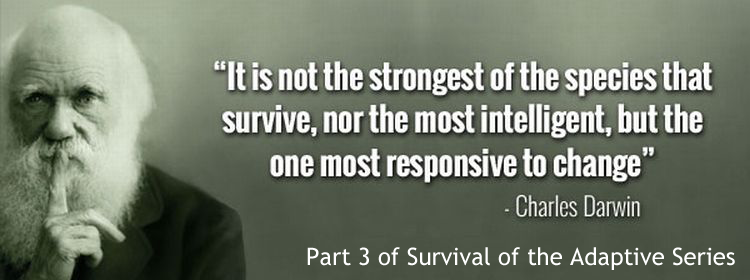
This series of ‘Survival of the Adaptive’ articles will look at the key things we need to do as sales teams to contend with the many changes afoot in our 21st century world and market place.
Part 3 is all about using effective metrics to track sales
In an ideal world, the financial returns and the ability of the sales force to generate business at respectable margins would be precisely calculated, and deciding the effectiveness of any sales strategy would be simple. In reality however, there are multiple, and usually imperfect ways to measure most sales activities. Because of all the variables involved, attempting to make a direct correlation between sales activity and sales results just isn’t good enough.
For example, a company that sells products that are seasonal may have high pre-sales activity in the off season, simply to create the awareness needed for up-take in the demand peak season. A salesperson calling on prospects to “sow seeds” in the off-peak, for future demand, without generating much business may be penalised, whilst a colleague in another sector (that is generating business on a more consistent daily basis) is rewarded. When the seasons turn and the demand period arrives, the salesperson who appeared to be under-performing in the off season may shoot the lights out of their targets.
 Here’s the challenge. If the measures are incorrect to start with – if the only measure is the direct correlation between sales activity and sales value / volume – there is the risk of de-motivating salespeople and rewarding the wrong behaviour.
Here’s the challenge. If the measures are incorrect to start with – if the only measure is the direct correlation between sales activity and sales value / volume – there is the risk of de-motivating salespeople and rewarding the wrong behaviour.
A basic tenant in measuring sales performance and ROI is ensuring that it measures the kind of results and behaviour the organisation expects. In other words, before rushing to judgment, companies need to take time to consider what they expect the sales force to deliver in the short, medium and longer-term.
A bad habit introduced into many sales metrics is measuring sales input activity – i.e. sales calls, size of prospect pipeline, etc. And whilst these are useful metrics, the focus should really be on outputs – i.e. the actual sales achieved, not just the sales activities. And a good sales strategy takes cognisance of both of these (i.e. inputs and outputs)
Beyond direct value / volume output sales measures there are some additional criteria to consider when developing the sales strategy that drives sales measures, these include:
- The number of sales calls made
- The impact of sales effort on share of mind of customers and prospects
- The prospects’ awareness of the value proposition of the organisation
- The call-back that salespeople have had with specific prospects
Remember everybody lives by selling something.
Author: Sue Barrett, www.barrett.com.au


New Article Email Notification